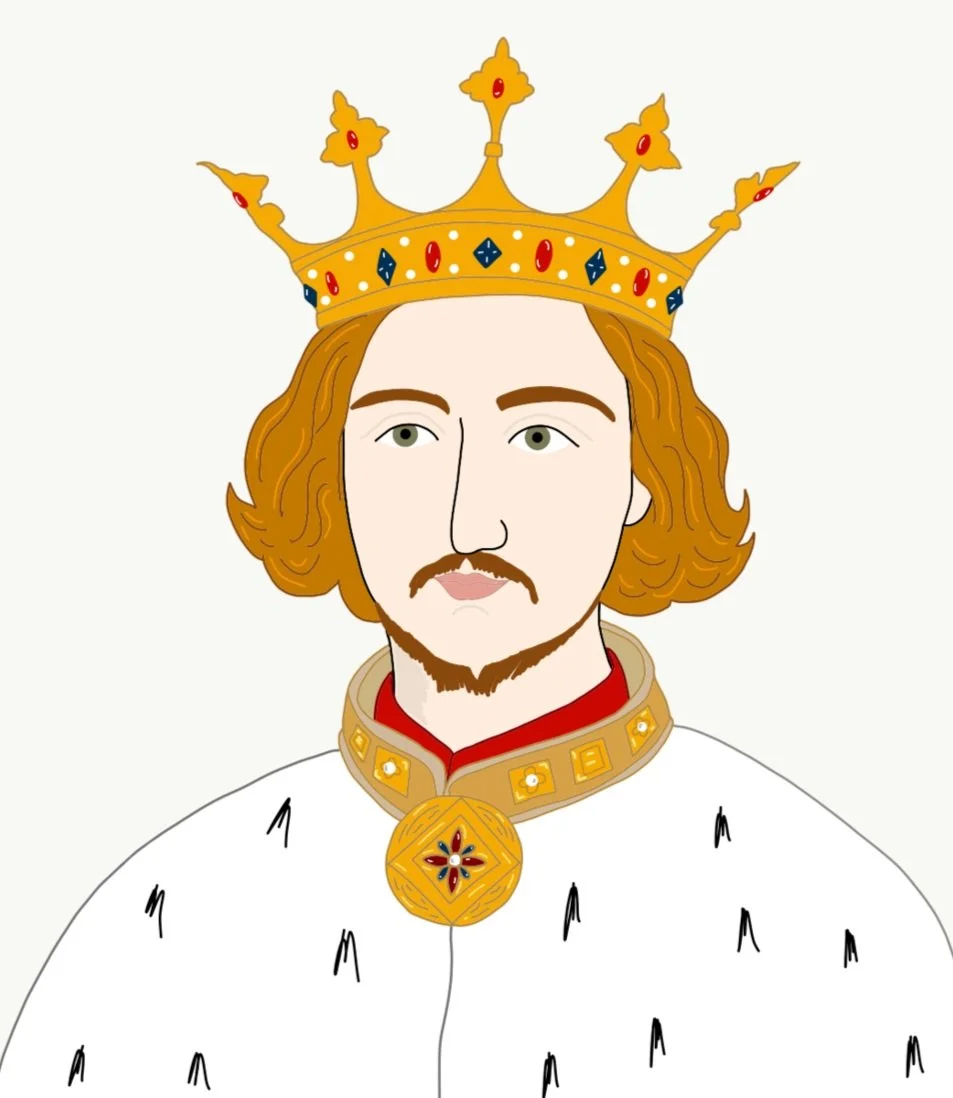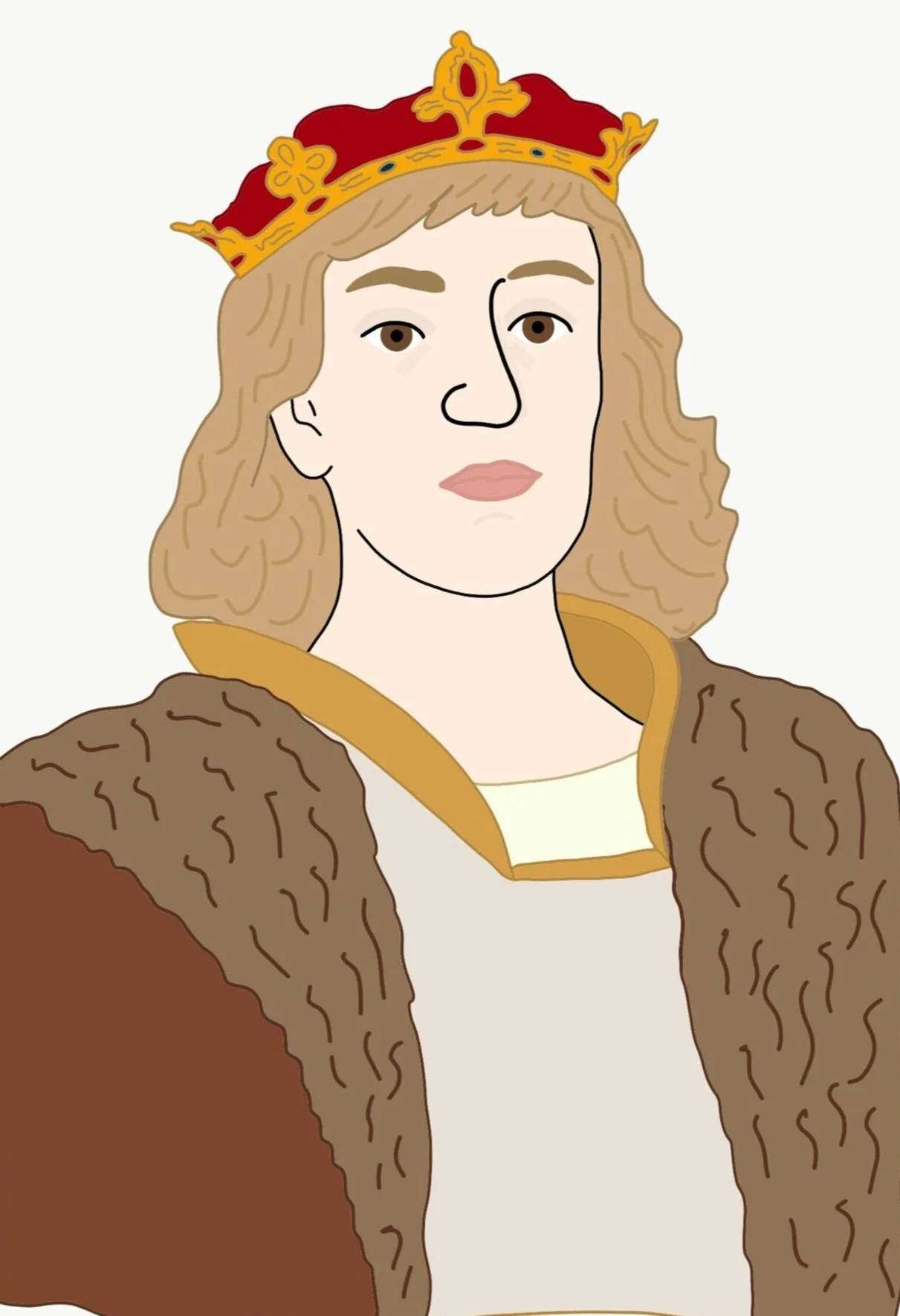September 30th - October 6th
On 30th September…
Richard II forced to abdicate by his cousin
1399 - King Richard II of England, abdicated the throne in favour of his cousin, Henry Bolingbroke. Richard had been king since the age of ten and didn’t want to abdicate, but was forced to do so by his cousin, Henry Bolingbroke, who was rebelling against Richard’s rule and his seizure of Henry’s father’s lands and treasures. These lands and treasures should have been given back to Henry when his dad, John of Gaunt, died but the king changed his mind and decided to keep them for himself. Bolingbroke gained the support of many nobles who were also angry with the king. They helped Henry gain power and capture Richard II. When the king finally abdicated, Henry was crowned King Henry IV.
1888 - Jack the Ripper murdered two more women, Elizabeth Stride and Catherine Eddowes. It is believed that he was interrupted during the murder of Elizabeth Stride, so he went in search of another victim that evening.
On 1st October…
King Eadwig dies aged 19 years
959 - King Eadwig of England died at the age of about 19 years. He became king at the age of 15 years when his uncle, King Eadred, died. During his reign the Anglo-Saxon kingdoms of Northumbria and Mercia revolted against him and declared his brother Edgar to be their king.
King Edgar I became king of all England upon Eadwig’s death.
King Henry III is born
1207 - King Henry III was born in Winchester Castle and became king at the age of only nine years. He was the son of King John, the king who had been forced to sign the Magna Carta and who lost the crown jewels in The Wash.
Mary I crowned Queen of England
1553 - Queen Mary I was crowned at Westminster Abbey. She was the daughter of Henry VIII and his first wife, Catherine of Aragon. Mary was given the nickname Bloody Mary for her persecution of Protestants; she did not like them or agree with their beliefs and reinstated Catholicism as the religion of England during her reign. She ordered the death by burning of about 300 Protestants for their religious beliefs.
On 2nd October…
Richard III is born
1452 - King Richard III was born in Fotheringhay Castle in Northamptonshire. He became king after usurping his young nephew, Edward V. Richard III was violently killed when he was 32 years old at the Battle of Bosworth Field. This battle brought an end to the Wars of the Roses and saw the beginning of the Tudor period. Legend says that Richard’s crown was found in a bush and placed on the victor's head.
1869 - Mohandas Karamchand Gandhi (Mahatma Gandhi) was born in India. He was a lawyer, politician, social activist and writer who became the leader of the nationalist movement against the British rule of India. He sought peaceful ways to bring about Indian independence.
Twickenham holds its first rugby match
1909 - The first rugby match to be played at Twickenham took place between Harlequins and Richmond, the final score was 14-10.
The stadium was built on an area that was previously used as a market garden for growing cabbages but is now home to England’s International Rugby Team.
On 3rd October…
1283 Dafydd ap Gruffyd, Prince of Gwynedd, the last independent ruler of Wales was executed by King Edward I of England for treason. Dafydd had led a revolt against the English king and for that, he was punished. He became the first noblemen to be hanged, drawn and quartered. He was dragged through the streets of Shrewsbury attached to a horse, then hanged alive; revived; then sliced open, before being beheaded and cut into four quarters. Each piece of his body was then displayed in different parts of the country as a deterrent to other would-be traitors.
On 4th October…
1821 - John Rennie (the elder), the Scottish engineer died. He designed many canals. aqueducts, bridges and dockyards; amongst his works are Waterloo Bridge, Southwark Bridge and the Kennet and Avon Canal. He is buried in St Paul’s Cathedral.
First escalator on the Underground begins work
1911 - The first escalator on the London Underground began service at Earl’s Court Station. It connected the Piccadilly Line and District Line platforms and made it easier for passengers to move between the platforms.
On 5th October…
1936 - The Jarrow March set off for London. The march was organised by the unemployed men of Jarrow to draw attention of their plight to the British government; their town had been prosperous and busy before and during World War I when there was a huge demand for ships to be built but since the end of the war and the Depression of the 1930’s the shipbuilding industry in the town had all closed down.
About 200 fit and unemployed men walked 300 miles from the town of Jarrow in north-east England to London in order to let Parliament know that since the shipbuilding company had closed there was no other source of work for them or their families; the little money they received from the government did not help much; and the living standards of the town had dropped to very low levels.
Unfortunately, the march only succeeded in getting attention and sympathy for Jarrow, the Government still did not do much to help. Their lives only changed with the onset of World War II and the new demand for naval ships which once again opened their shipyards for business.
Co-Founder of Apple dies
2011 - Steve Jobs the co-founder of Apple died after a long battle with cancer. He set up Apple Computers in his parents’ garage with his friend Steve Wozniak; their company went on to become the successful computer giant that it is today.
On 6th October…
1854 - The Great Fire of Newcastle and Gateshead started in a factory on the riverfront side of the River Tyne in Gateshead. The factory produced worsted; a smooth yarn made from wool. Next door to the factory was a warehouse filled with explosive chemicals such as brimstone and manganese which was also in danger of catching fire.
People had begun to gather on the opposite bank of the river in Newcastle to watch the fire thinking that they were at a safe distance because the river was between them. Firemen and soldiers were battling the blaze trying to stop it spreading to the warehouse but eventually the warehouse packed with the chemicals caught fire.
The explosive chemicals heated up and exploded causing fireballs to shoot in all directions, including across the river to the crowds of people and buildings in Newcastle. The explosion was so big that folk living in Hartlepool, 30 miles away even heard it and thought it was an earthquake.
Firemen were called from towns up to 20 miles away to help fight the blaze which by now was on both sides of the river burning down homes and businesses, including pubs whose stocks of alcohol only added more fuel to the flames. Fifty-three people died and hundreds more were injured as a result of the fire and many buildings and businesses were destroyed.
1927 - The Jazz Singer was released. It was the first film to made with sound; all films before then had been silent and in black and white; music was only added when the film was shown in the cinemas by a musician playing an organ as the film displayed. The film starred the actor Al Jolson who played a man going against his father’s wishes and becoming a jazz singer.







